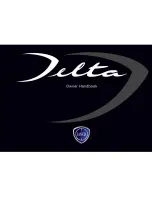
Forward Collision Mitigation System (FCM)*
Starting and driving
6-87
6
• During a certain time after your vehicle
turns left or right.
• When you are carrying extremely heavy
loads in the rear seats or luggage area
*
.
• After the engine has been running for an
extended period of time.
• Under adverse weather conditions (rain,
snow, sand storms, etc.)
*
• When the emblem on the front bumper and
the sensor become dirty or adhering snow
and ice
*
.
• When water, snow or sand on the road are
thrown up by the vehicle in front or an
oncoming vehicle
*
.
• An extremely strong electromagnetic wave
is received from a source such as an illegal
radio set, a spark from a wire, or a radar sta-
tion.
*
: When judging the state that detection per-
formance deterioration by these situations
automatically, “FCM RADAR BLOCKED”
or “ACC/FCM RADAR BLOCKED” mes-
sage is indicated, and a
indicator lights
up. Additionally, it may be indicated when
you are driving in light traffic with few vehi-
cles and obstacles in front.
When judging the state that the FCM can’t
operate temporarily automatically, “FCM
TEMPORARILY NOT AVAILABLE” mes-
sage is indicated, and a
indicator lights
up.
CAUTION
When the FCM will be in the state which can
operate, indication is released automatically.
When indication keeps lighting up, there is
an abnormal possibility of the system. Please
contact an authorised MITSUBISHI
MOTORS dealer.
Factors such as the lateral positional rela-
tionship between your vehicle and a vehicle
in front, driver’s own technique of steering
the vehicle and irregularly moving traffic
due to accidents or vehicle trouble may deter
the FCM control and alarm from function-
ing.
When the system recognises driver’s steering
or accelerating actions as evasive actions to
avoid collision, the FCM control and alarm
functions may be cancelled.
Be careful when cleaning the emblem and
the sensor so as not to cause damage.
The FCM control and alarm functions may
be triggered in the following situations.
• When there is a structure (B) beside the
entrance of a curve and intersection.
• When running on a narrow iron bridge.
CAUTION
B
• When passing through a gate with small
head or side clearances.
• When there are metallic objects, steps or
projections on the road surface.
• When quickly approaching a vehicle in
front to overtake it.
• When passing an electronic toll collection
gate.
• When running under an overpass, an pedes-
trian overpass or a tunnel.
• When running in multi-storey car park.
• When running the road the gradient
changes suddenly.
• When stopping very close to a wall or a
vehicle in front.
• When passing close to the vehicle or an
object.
CAUTION
















































